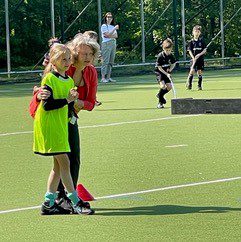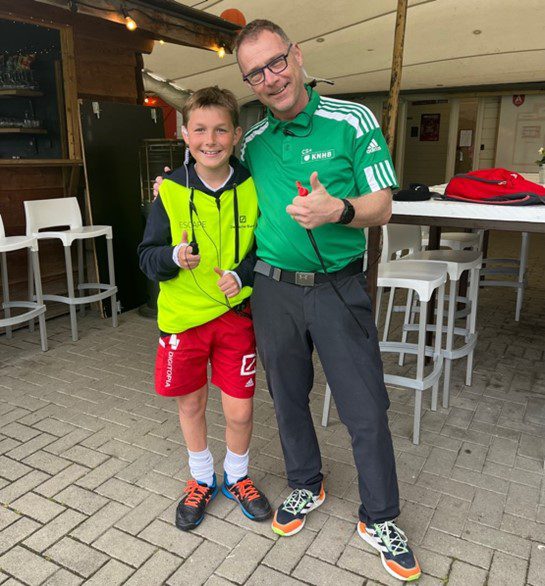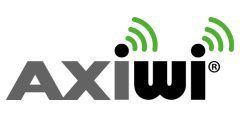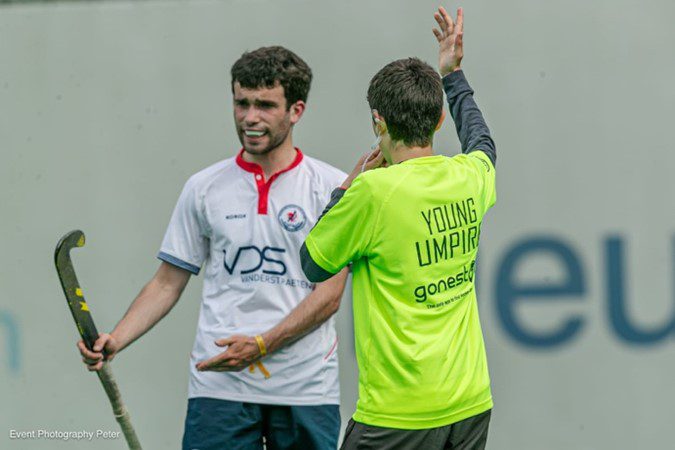The photo above was taken by: Event Photography Peter
How do you start training a young umpire while a critical audience, coach or manager prefers a national umpire at every level? Royal Antwerp Hockey Club (RAHC) works with enthusiastic volunteer umpires who want to supervise a match as well as possible. After their own played game, club players often lead games as an umpire.
The headsets can cause stress if they still need to gain 100% self-confidence; there should be no dependency on the technology.
Basic knowledge
From the first match as an umpire, RAHC focuses on mastering and applying the basic knowledge:
- Taking the correct position on the field, the so-called running lines;
- Strong/convincing body language when making decisions, as part of your appearance;
- Modulate and interact with the whistle to strengthen your authority as a umpire.
Youth umpires are allowed to start with ‘practice whistling’ at the RAHC Umpire Academy from the age of 9 (U10). In the matches, which become more and more challenging as the umpire gets older, they can apply the knowledge and gain practical experience. The training course is gradual and consists of ‘learning by doing’. Young people sometimes umpire several matches on one match day.


Learned young
Starting umpires always start with a match with the youngest: U7 and U8. This has several advantages: the results of these matches do not count (competition standings), one parent on the side takes care of the timekeeping, and another one counts the goals (because there are sometimes very many); a pleasant affair! The umpire learns to speak to young players, which will be an advantage later on when strict communication is required with hockey players to defend decisions or apply the advantage rule. Of course, the referee coach is watching, so the referee can confidently decide.
Confidence
Confidence! The word is out. At Antwerp, there is one rule for indicating the level at which an umpire whistles: the umpire must never lose confidence. As a result, ‘Fair Play’ remains assured, and the RAHC Umpire Academy, in turn, continues to have confidence. An umpire coach is present at each ‘difficulty level’ transition. Antwerp invests in its youth by paying the umpire coaches. After all, training and coaching make sense for hockey players, so why should umpires do it alone?
Headset support
You cannot put a coach next to every umpire as a club. The second pillar for the growth of umpires is the ‘strong duos’. Umpires are challenged at their level and soon whistle above their own ‘level of play’. This will also improve your qualities as a hockey player in the long term: playing hockey and whistling reinforce each other. For example, a CS+ or strong youth player whistles with a junior and knows that he is the leading umpire in that case. The photos show 12-year-olds refereeing matches for D2 and H2. This is where the AXIWI headsets come into play. Where they learn to make autonomous decisions on the small field and at youth competitions and to communicate with each other on the field with body language and whistle signals, they receive the necessary support through the headsets in the adult competitions. The headsets can cause stress if they still need to gain 100% self-confidence; there should be no dependency on the technology.

The picture above is taken by: Event Photography Peter
Fairplay
Birgitte from the RAHC Umpire Academy often wonders how they start training elsewhere. But she did not find any other clubs that professionally supervise referees at the age of 9 years. And so, they refine the system based on quality control and by critically looking at whether ‘Fair Play’ is always ensured. The assignment is successful if the teams and the umpires keep their confidence!
Birgitte Devos – Umpire Coach RAHC




